
(RTD) Resistance Temperature Detectors
Resistance Temperature Detectors (RTD), are sensors/probes which are used to measure temperature by correlating the resistance of the RTD element with temperature. Most RTD elements consist of a length of fine coiled wire wrapped around a ceramic or glass core. The element is usually quite fragile, so it is often placed inside a sheathed probe to protect it. The RTD element is made from a pure material whose resistance at various temperatures has been documented. The material has a predictable change in resistance as the temperature changes; it is this predictable change that is used to determine temperature.
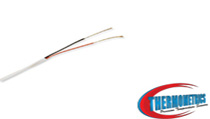
2 Wire RTD
The simplest resistance thermometer configuration uses two wires. It is only used when high accuracy is not required, as the resistance of the connecting wires is added to that of the sensor, leading to errors of measurement. This applies equally to balanced bridge and fixed bridge system.
click for more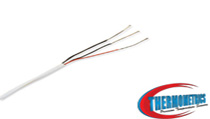
3 Wire RTD
In order to minimize the effects of the lead resistances, a three-wire configuration can be used. Using this method the two leads to the sensor are on adjoining arms. There is a lead resistance in each arm of the bridge so that the resistance is cancelled out, so long as the two lead resistances are accurately the same.click for more
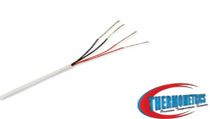
4 Wire RTD
The four-wire resistance thermometer configuration increases the accuracy and reliability of the resistance being measured: the resistance error due to lead wire resistance is zero.
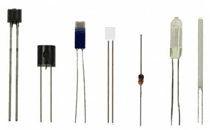
Thin Film Elements
Thin film elements are mass produced by automated equiptment which deposites a layer of platinum onto a ceramic substrate and uses a layer photolithography to etch an electrical current path corresponding to the required value of ohms. The elements are smaller than traditional wire and as a result have a faster response time and fit more applications, while reducing user costs at the same time.
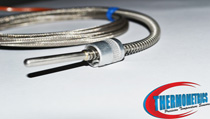
Bayonet Mount RTD
Universal design allows for quick thermocouple or RTD installation into existing twist-lock adapters.
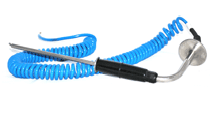
Piercing Probe RTD
In order to minimize the effects of the lead resistances, a three-wire configuration can be used. Using this method the two leads to the sensor are on adjoining arms. There is a lead resistance in each arm of the bridge so that the resistance is cancelled out, so long as the two lead resistances are accurately the same.click for more

3 Wire RTD
In order to minimize the effects of the lead resistances, a three-wire configuration can be used. Using this method the two leads to the sensor are on adjoining arms. There is a lead resistance in each arm of the bridge so that the resistance is cancelled out, so long as the two lead resistances are accurately the same.click for more

3 Wire RTD
In order to minimize the effects of the lead resistances, a three-wire configuration can be used. Using this method the two leads to the sensor are on adjoining arms. There is a lead resistance in each arm of the bridge so that the resistance is cancelled out, so long as the two lead resistances are accurately the same.click for more

3 Wire RTD
In order to minimize the effects of the lead resistances, a three-wire configuration can be used. Using this method the two leads to the sensor are on adjoining arms. There is a lead resistance in each arm of the bridge so that the resistance is cancelled out, so long as the two lead resistances are accurately the same.click for more

RTD Sensor References
- RTD Sensor Overview
- 10 Ω RTD
- 100 Ω RTD
- 500 Ω RTD
- 1000 Ω RTD
- Class A vs. Class B Elements
- 2 Wire RTD
- 3 Wire RTD
- 4 Wire RTD
- Measuring Temperature With RTDs
- RTD Fundamentals
- Theory Of Operation
- RTD Specifications
- Temperature Coefficient
- Nominal Resistance
- Wiring Configuration
- Temperature Range
- RTD Accuracy
- RTD Dimensions And Size
- Matieral Compatibility
- Benifits Of An RTD
- Dolor sit amet cocing veseaiociisec
- Sit amet cocing vesean noriussociis

dollor porta sreen amet dollro.
Miris fusce suscipit ociis aparturient ontna scetur ridicsrem ipsum olor.
Rris fusce suscipit ociis aparturient ontna scetur ridicsrem ipsum olor sit amet cocing vestienean nonummy variusso.




